Rod B sticks to rod A on collision. Collision takes place on horizontal place on horizontal plane. Rod-A is hinged at O. Friction is absent every where.
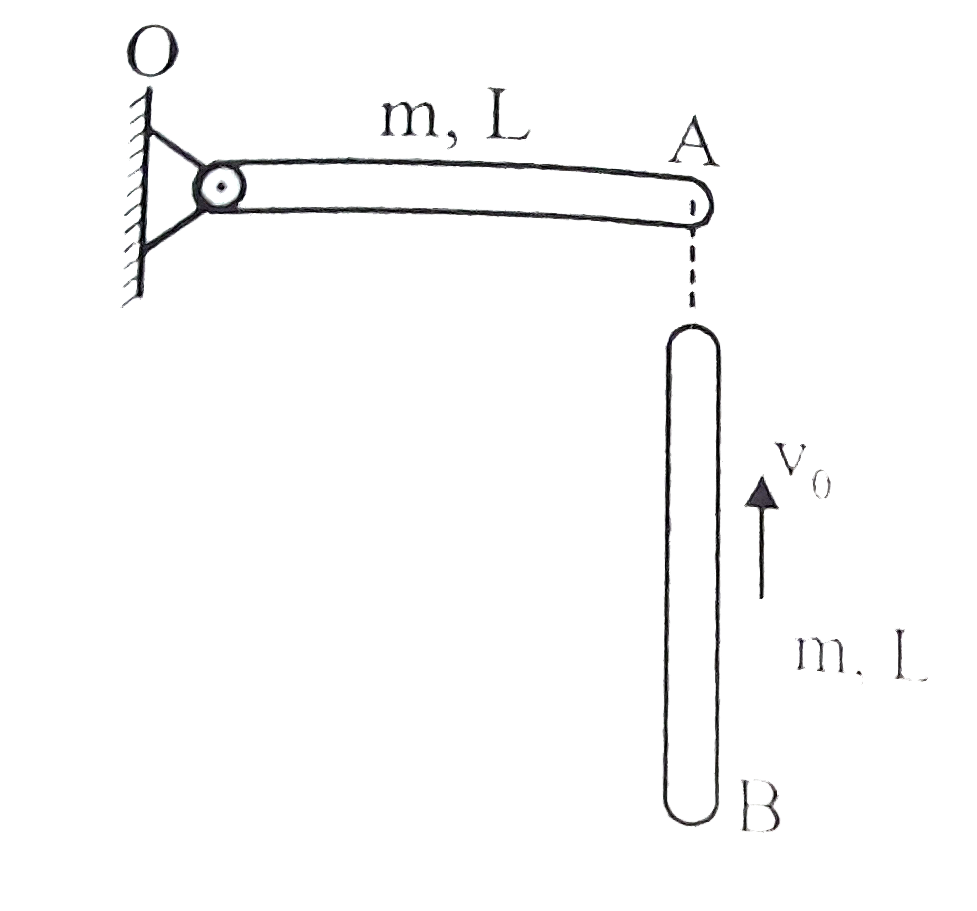
Angular velocity of system just after collision is 2v05L
Velocity of centre of mass of system just after collision is √940v0
Centre of mass of system is at a distance of √10L4 from O
Kinetic energy of system just after collision is 940mv2.
The correct Answer is:A
Conservation of Angular momentum about hinge
mv0L=Iω
I=53Ml2,ω=3v05L<br>KE=12Iω2
rc=√(3L4)2+(L4)2=√10L4
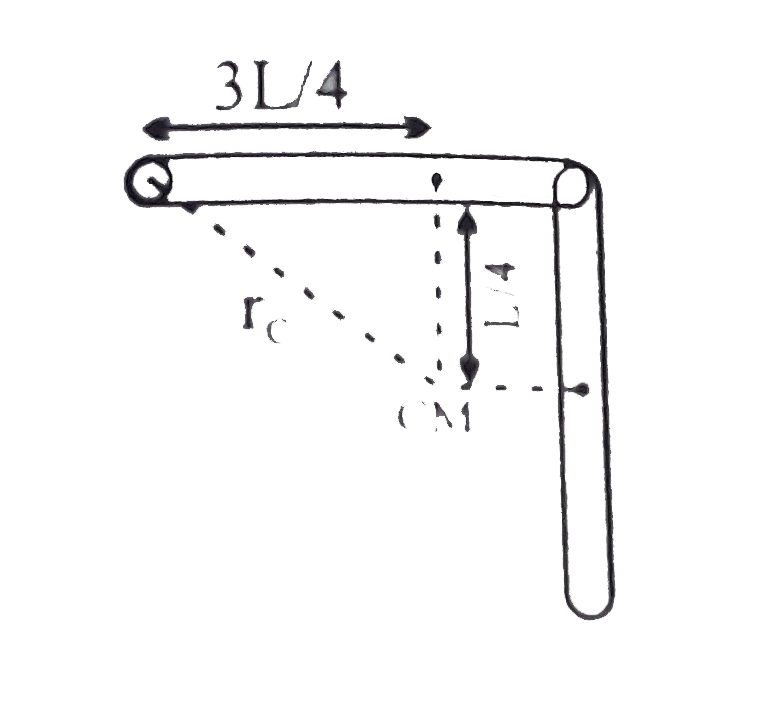
Topper's Solved these Questions
- TEST PAPERSBOOK - BANSALCHAPTER - TEST PAPERSEXERCISE - Physics, SECTION-1 (PART-B) [MATRIX TYPE]
2 Videos
- TEST PAPERSBOOK - BANSALCHAPTER - TEST PAPERSEXERCISE - Chemistry, SECTION-2 (PART-A) [SINGLE CORRECT CHOICE TYPE]
5 Videos
- TEST PAPERSBOOK - BANSALCHAPTER - TEST PAPERSEXERCISE - Physics, SECTION-1 (PART-A) [COMPREHENSION TYPE]
2 Videos
- PROBABILITYBOOK - BANSALCHAPTER - PROBABILITYEXERCISE - All Questions
1 Videos
- THERMODYNAMICSBOOK - BANSALCHAPTER - THERMODYNAMICSEXERCISE - Match the column
7 Videos
Similar Questions
One fourth length of a uniform rod of length 2l and mass m is place don a horizontal table and the rod is held horizontal. The rod is released from rest. Find the normal reaction on the rod as soon as the rod is released.
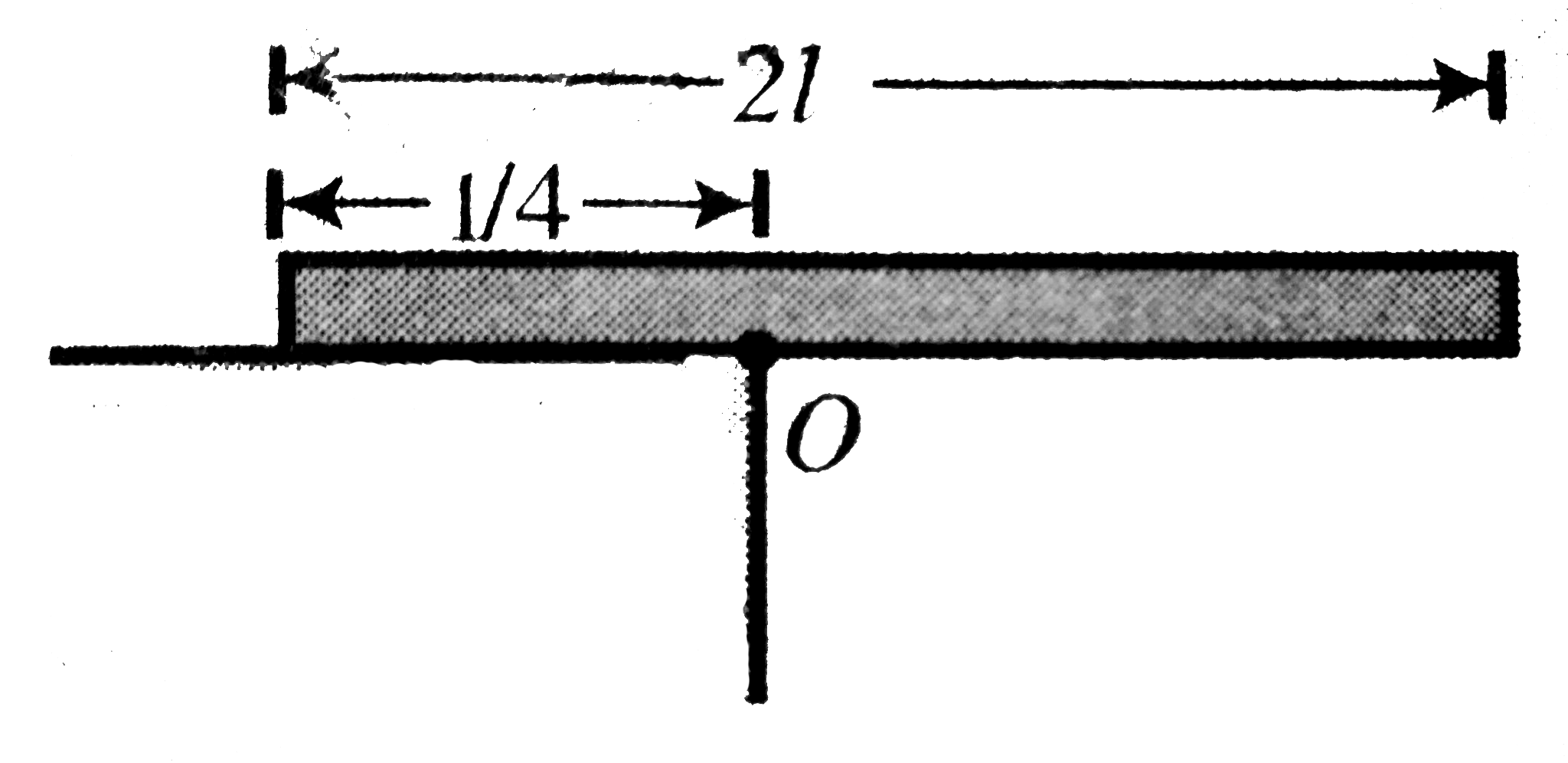
View SolutionOne fourth length of a uniform rod of length 2l and mass m is place don a horizontal table and the rod is held horizontal. The rod is released from rest. Find the normal reaction on the rod as soon as the rod is released.

View Solution
Knowledge Check
A rod CD of length L and mass m is placed horizontally on a frictionless horizontal surface as shown. A second identical rod AB which is also placed horizontally ( perpendicular to CD) on the same horizontal surface is moving along the surface with a velocity v in a direction perpendicular to rod CD and its and B strikes the rod CD at end C and sticks to it rigidity. Then,
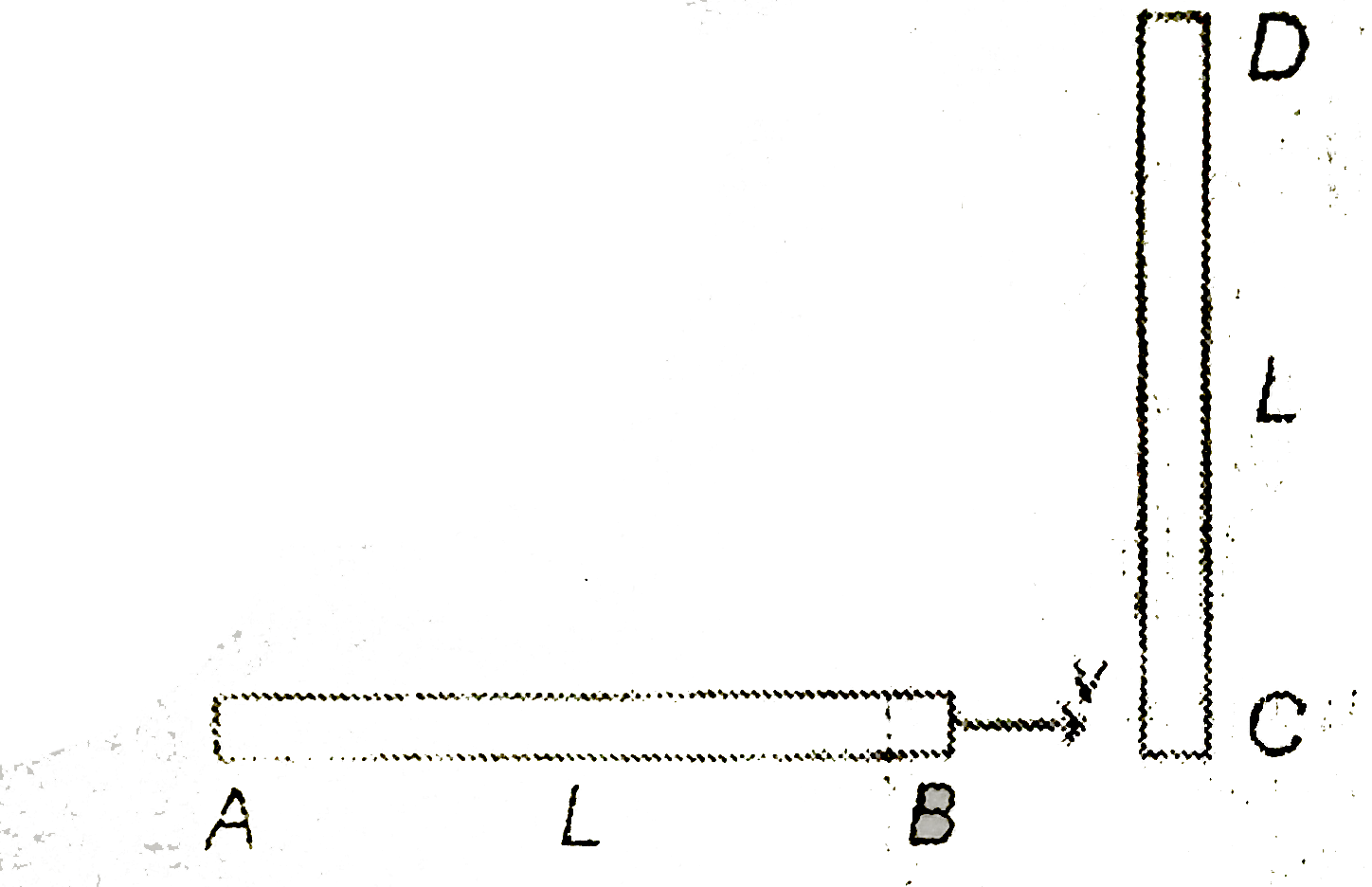 AVelocity of centre of mass of the system just after collision is v4Bangular speed of system just after collision is 2v5LCVelocity of centre of mass of the system just after collision is v2Dangular speed of system just after collision is 5L3L
AVelocity of centre of mass of the system just after collision is v4Bangular speed of system just after collision is 2v5LCVelocity of centre of mass of the system just after collision is v2Dangular speed of system just after collision is 5L3LA uniform rod of mass m and length L is hinged at one end and free to rotate in the horizontal plane. All the surface are smooth. A particle of same mass m collides with the rod with a speed V0. The coefficient of restitution for the collision is e=12. If hinge reaction during the collision is zero then the value of x is :
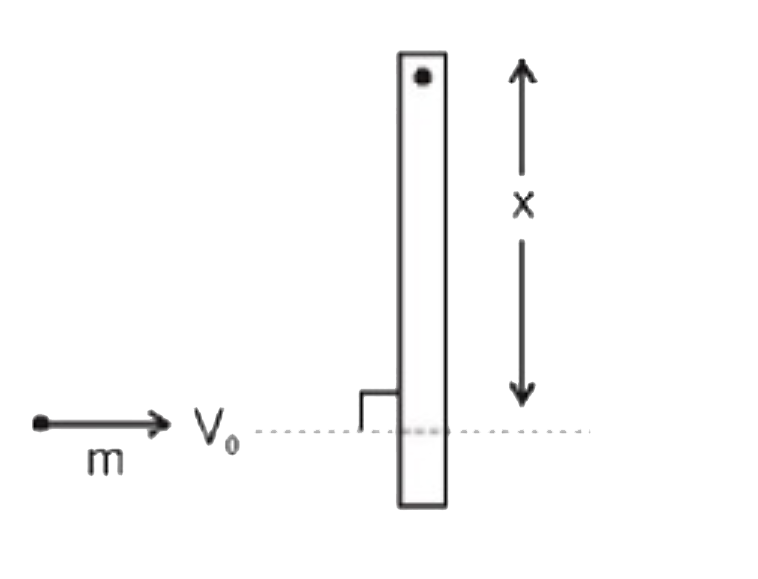 ANo such value of x is possibleBx=L2Cx=2L3Dx=L
ANo such value of x is possibleBx=L2Cx=2L3Dx=L
A uniform rod of length L and mass M has been placed on a rough horizontal surface. The horizontal force F applied on the rod is such that the rod is just in the state of rest. If the coefficient of friction varies according to the relation μ =Kx where K is a +ve constant. Then the tension at mid point of rod is?
View SolutionA rod CD of length L and mass m is placed horizontally on a frictionless horizontal surface as shown. A second identical rod AB which is also placed horizontally ( perpendicular to CD) on the same horizontal surface is moving along the surface with a velocity v in a direction perpendicular to rod CD and its and B strikes the rod CD at end C and sticks to it rigidity. Then,

View SolutionA rod AB is 1 m long. It is hinged at A so as to rotate in a vertical plane. Initially the rod is horizontally placed and then it is released from rest Obtain the angular speed of the rod and the linear speed of its free end as it passes through the position shown in the diagram.
View SolutionIn the figure a uniform rod of mass 'm' and length 'l' is hinged at one end and the other end is connected to a light vertical of spring constant 'k' as shown in figure. The spring has extension such that rod is equilibrium when it is horizontal . The rod rotate about horizontal axis passing through end 'B'. Neglecting friction at the hinge find (a) extension in the spring (b) the force on the rod due to hinge.
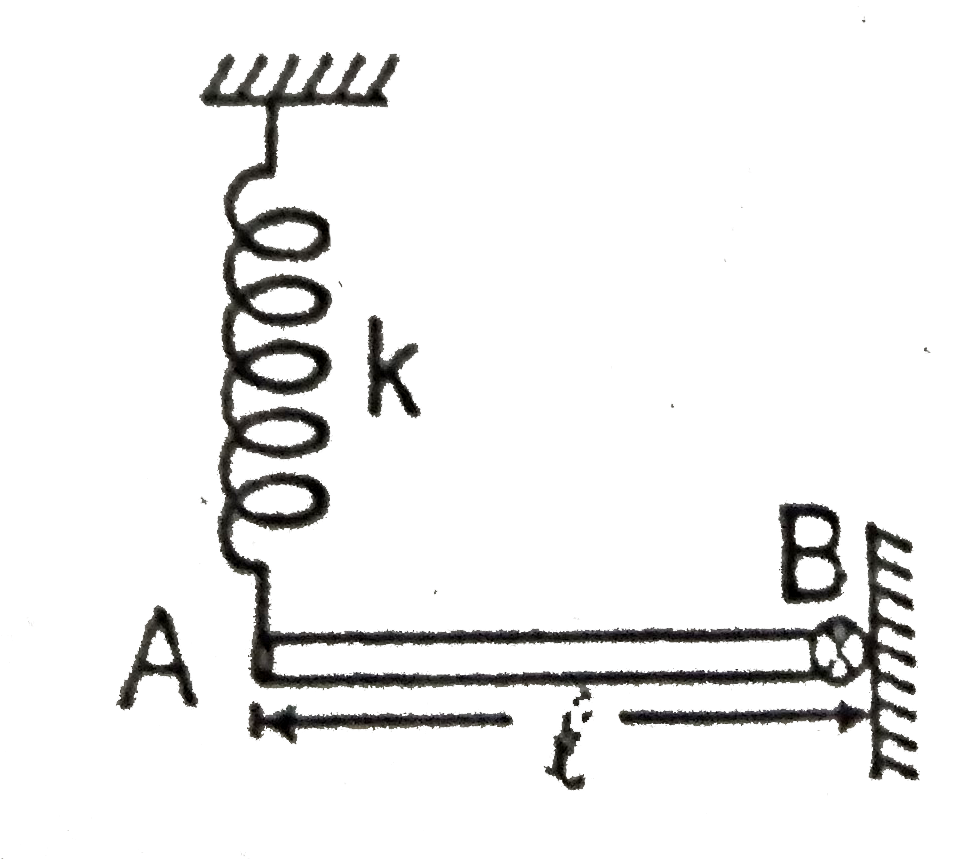
View SolutionA uniform rod of mass M and length L is hinged at its lower end on a table. The rod can rotate freely in vertical plane and there is no friction at the hinge. A ball of mass M and radius R=L3 is placed in contact with the vertical rod and a horizontal force F is applied at the upper end of the rod.
(a) Find the acceleration of the ball immediately after the force starts acting.
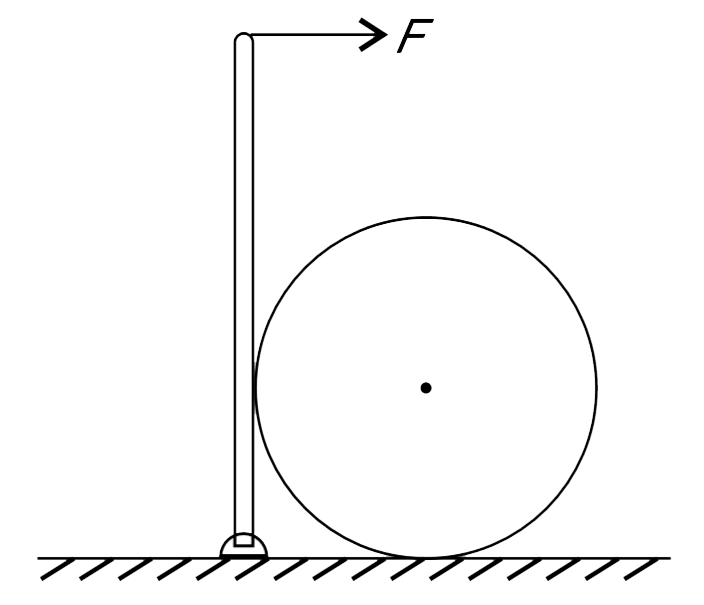
(b) Find the horizontal component of hinge force acting on the rod immediately after force F starts acting.
View SolutionA uniform rod of mass m and length L is hinged at one end and free to rotate in the horizontal plane. All the surface are smooth. A particle of same mass m collides with the rod with a speed V0. The coefficient of restitution for the collision is e=12. If hinge reaction during the collision is zero then the value of x is :

View Solution
